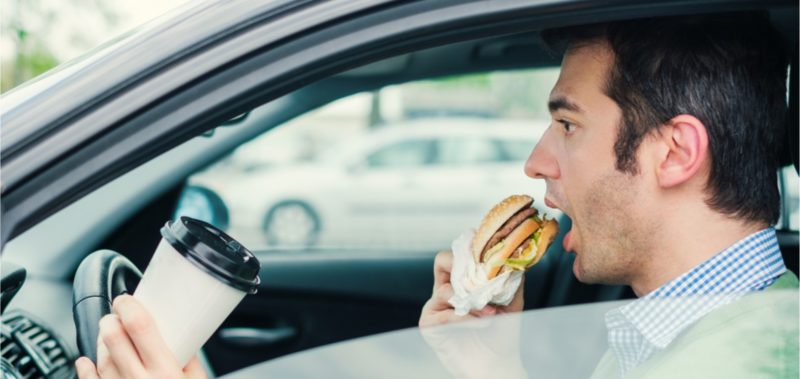8 Bad Driving Habits to Avoid

Bad driving habits lead to motor vehicle accidents, injuries, death and sometimes an increase in car insurance premiums. Read on to learn how you can avoid some common bad driving habits.
1. Distracted Driving
Distracted driving is anything that diverts your attention away from the road, including talking or texting on your phone, talking to passengers, eating, drinking, listening to music, etc. Distracted driving increases the risk of motor vehicle accidents. According to the CDC, approximately nine people are killed each day in the United States by a distracted driver. Please drive safely.
2. Tailgating
Tailgating is driving too closely behind another vehicle. Tailgating is dangerous because it does not give you enough room to avoid a collision. If you need to go faster, pass the car in front of you in another lane. Be sure it’s safe to do so. If it is not, slow down and keep a safe distance until it is.
3. Not Wearing Seat Belts
According to the National Highway Traffic Safety Administration (NHTSA), seat belt use saved an estimated 14,955 lives in 2017. Of the 37,133 people who died in car crashes in 2017, 47% were not wearing seat belts. Seat belts keep passengers safe and secure in the vehicle during an accident. Not wearing one can leave you at risk for being ejected during a crash. Seat belts literally save lives so don’t forget to buckle up!
4. Speeding
Everyone may speed a little every once in a while, but once you catch yourself, you should slow down. Driving above the speed limit puts everyone at risk and increases the chance for a car accident. According to the NHTSA, there were over 9,000 fatalities due to speeding in 2017. Please drive according to the posted speed limits it can also help prevent traffic violations.
5. Rolling through stop signs
When you see a stop sign, you should make a complete stop. Rolling through a stop sign can be dangerous, especially if the intersection is not a four-way stop. The cars in the other direction do not have to yield and may crash into you if you don’t make a complete stop. You also have to be mindful of pedestrians.
6. Accelerating Through Yellow Lights
Yellow lights signal to us that we are supposed to slow down. But sometimes, we may want to “beat the red light” by speeding through the intersection at a yellow light. This can cause an accident for other drivers who may be waiting to turn at the intersection. Each state’s “yellow light” laws vary, but one common factor is that yellow lights mean caution or slow down and they signal to us that a red light is coming. Please be safe and slow down at yellow stoplights.
7. Driving While Tired
According to the National Safety Council (NSC), driving while drowsy, is similar to driving under the influence. Driving while fatigued slows down your reaction times and affects your ability to sustain attention. According to the NSC, you are three times more like to be in a car crash if you are fatigued.
If you are driving and are tired, pull over somewhere safe, and try to get a few minutes of sleep. You can also ask a family member or friend for a ride, or use a rideshare service. Never get behind the wheel if you are sleepy.
8. Not Checking Blind Spots
A blind spot is an area surrounding the vehicle that the driver cannot see. Any time you are changing lanes or merging, you will want to check your blind spots for cars that you may not see. Do this by checking the rear mirror and side mirrors. You should also do a swift shoulder check. Flip on your turn signal to let the other drivers know you are moving over and when it’s safe, quickly move over. If there are passengers in the car, you can ask them for assistance.
Avoiding bad driving habits makes you a safer driver, but you still need to make sure you have car insurance that you can rely on should you ever get in a car accident.
Related Articles
-
 August 7th 2023
August 7th 2023The Top 10 Biggest Issues Auto Insurance Agents are Facing Today
In the post-pandemic world, insurance agents face numerous new challenges, as well as some old ones. In[...]
-
 June 17th 2024
June 17th 2024The Evolution of Personal Lines Insurance: What Independent Agents Need to Know
Ever since the development of the internet, personal lines insurance agencies have undergone a tremendous amount of[...]
-
 June 3rd 2024
June 3rd 2024Tapping into Emerging Markets: The Role of Independent Agents in Today’s Insurance Industry Trends
Insurance industry trends have shifted dramatically in the past two decades. The average client has a level[...]
-
 May 21st 2024
May 21st 2024What Does It Take to Be an Insurance Agent Today in America’s Southeast
Becoming an insurance producer can be an exciting and rewarding career path. In this job, you can[...]
